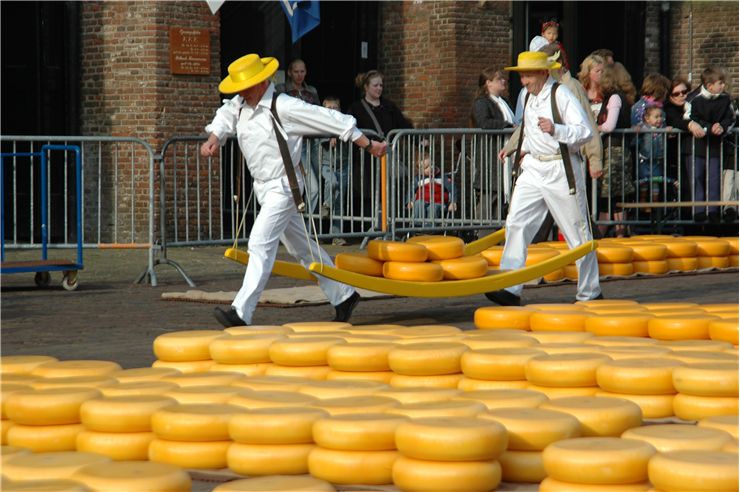The Origin of Cheese - Where and When was Cheese First Made
Cheese is as old as modern mankind, with clues about its existence reaching all the way back to 8,000 BC when first sheep and goats were domesticated by our ancestors. Surviving records about their way of life showed us that they used animal skins and inflated internal organs as storage mediums, leading to conclusion that the first discovery of making cheese was probably accidental. Storing milk in such internal organ storage would bring milk in contact with rennet, which would quickly transform milk into curds and whey. The oldest archeological proofs of cheese existence date back to 5,500 BC, with first visual clue being recorded on the Egyptian tomb walls some 4 thousand years ago. Examples of cheese made in such time in Egypt and Middle East was most likely very salty and strong tasting and crumbly, similar to the modern Feta and cottage cheese. This was done because the average temperature in those regions was pretty high, which forced cheese to have much more natural preservatives in its structure (salt).
As art of making cheese spread from Egypt toward north, Greece and Rome became birthplaces of many more types of cheese, where lower temperature enabled cheese makers to experiment not only with rennet and other acidic agents that can transform milk into cheese, but also many other types of bacteria that can be used for creation of medium and hard cheeses. With less salt and preservatives, European cheeses were much more pleasant tasting and quickly many distinct aromas were made popular.
During the reign of Rome, cheese was used as everyday food by both rich and poor, with cheese making becoming a certified art that was praised by food lovers. Historian records from that time remain today, describing ancient ways of making many types of cheese that were made all over the Roman Empire. Sadly after the fall of Roman Empire, trade routes all around the Europe collapsed, preventing easy sharing of information and goods, bringing back cheese making into a highly competitive local production. This made cheeses from individual countries many more diverse, with France, Italy and England leading the way with between 400 and 700 cheese types each. Many of today’s popular cheeses were made before the arrival of Renaissance and establishment of new trading routes – Cheddar around 1200 and Parmesan in late 1590s. Many other came in 17th and 18th century.
With the arrival of Renaissance and advanced in naval travel, cheese exited the shores of Europe and spread all around the world. Many Asian cultures never heard of Cheese before (not counting India, which had long history with cheese), and same was the case with Americas. Organized production of cheese arrived in Europe in 1815 with the establishment of first cheese factory in Switzerland, but mass success was found only after dairy farmer Jesse Williams formed assembly line cheese factory in USA in 1851. Just decades later, cheese production exploded in North America, with factories surpassing home production by the time of WW2.
In modern times, factory production of cheese vastly surpasses home production, although many most respected cheeses are made using centuries old recipes that require careful manual handling of all cheese making processes.

